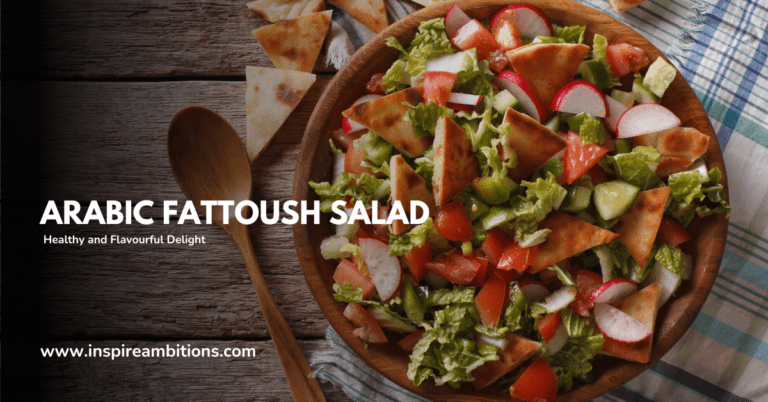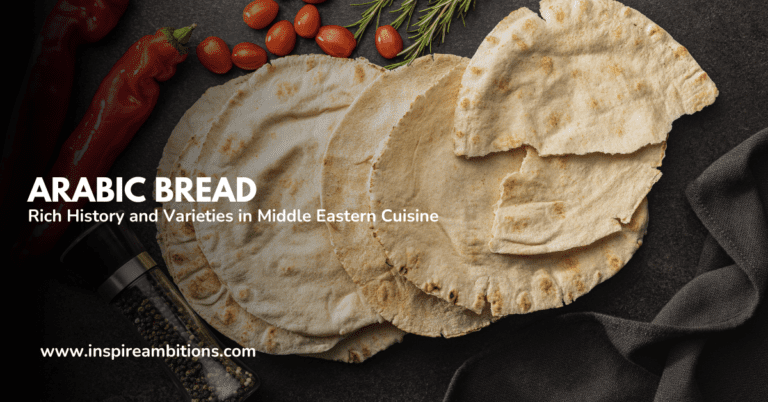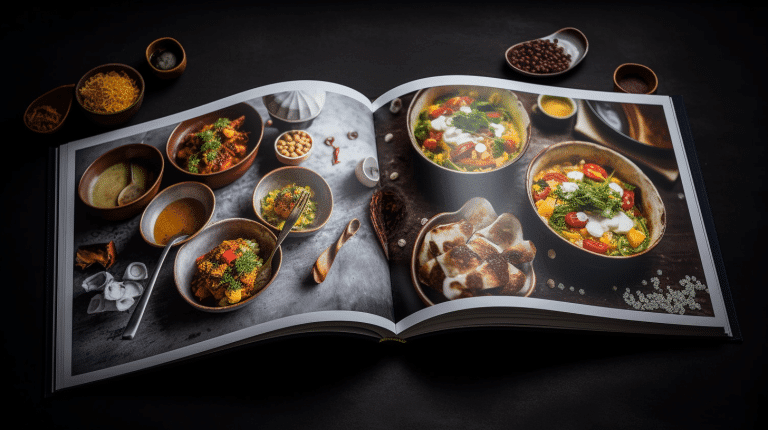Buffet Árabe – Um Guia Completo de Sabores e Pratos
Arabic buffets offer a delightful culinary experience, bringing the vibrant flavours of Middle Eastern cuisine to your plate.
As you explore the various dishes, expect to be impressed by the flavours, textures, and aromas that stem from a blend of herbs and spices, which are a hallmark of Arabic fare. From tender meats to fresh salads, the enchanting tastes of the Middle East are truly unparalleled.
When indulging in an Arabic buffet, you can’t miss the section dedicated to cold mezze. Sample ever-popular dishes such as hummus made from boiled chickpeas blended with sesame paste, lemon juice, and olive oil, or moutabbal, a tantalizing mix of charcoal-grilled eggplant marinated with sesame paste, lemon juice, and garlic.
This medley of appetizers showcases the wonderful variety found in the Arabic culinary landscape.
As you progress through the buffet, feast your eyes on the warm entrees, including succulent kebabs and the savoury shawarma that many have come to love. These dishes, expertly seasoned and cooked to perfection, will transport your taste buds to the heart of the Middle East.
An Arabic buffet truly offers a flavourful journey to be savoured and remembered.
History of Arabic Buffet
The Arabic buffet has deep historical roots in the Middle Eastern and Arabian Peninsula culinary traditions. Originating from the lavish feasts and banquets held in ancient times, the Arabic buffet has evolved to cater to modern tastes while retaining its rich and diverse flavours.
In medieval Arabia, huge feasts were held regularly, with large spreads of food served to celebrate various events and occasions. These feasts showcased the hospitalidade and generosity of the host, as well as an opportunity to display their wealth and status.
These feasts would often feature an array of dishes, including roasted meats, rice dishes, and a variety of sweet and savoury pastries.
Over time, the concept of the buffet began to evolve, incorporating Western influences, particularly during the 19th and 20th centuries. With the expansion of trade and travel, several adjustments were made to the Arabic buffet to cater to global tastes.
The spread started to incorporate various international dishes, leading to a fusion of Eastern and Western flavours.
Today, the Arabic buffet is a feast for the senses, offering a wide variety of dishes cooked with an array of spices and herbs. Dishes such as hummus, tabbouleh, and shawarma are now staples, with regional variations and adaptations.
The use of spices, such as baharat, is an essential element in Arabic cuisine, adding depth and complexity to the flavours.
When you attend an Arabic buffet, you are not only partaking in a culinary experience, but you are also engaging with centuries of tradition and hospitality.
Revel in the selection of aromatic dishes, and allow your palate to be enticed by the intricate flavours and textures that have been handed down through generations.
Essential Features of an Arabic Buffet
Variety of Dishes
In an Arabic buffet, you’ll be presented with an extensive range of dishes that showcase the rich flavours and unique taste profiles of Cozinha do Oriente Médio.
You’ll encounter a wide assortment of cold and hot mezzeh options such as Hommous, Moutabel, Tabouleh, Fattoush, Warak Enab, and Potato Harra. Additionally, main courses like Chicken Molukieh, Lamb Kabsa, and Kebbeh Bil Laban provide satisfying flavours that cater to your taste buds.
Seasonal Specialities
Arabic buffets focus on using fresh, seasonal ingredients to create mouth-watering dishes. These seasonal specialities not only enhance the overall culinary experience but also demonstrate the interplay of local ingredients with time-honoured cooking techniques. Make sure to savour these exclusive dishes, as they showcase the best culinary offerings of the current season.
Traditional Arabic Drinks
An essential feature of any authentic Arabic buffet is the variety of traditional beverages available. You’ll be introduced to a colourful array of refreshing drinks that perfectly complement your meal.
Indulge in the fruity shared or choose freshly brewed Arabic coffee or Moroccan mint tea. These drinks not only quench your thirst but also give you a glimpse into the region’s distinctive beverage culture.
Hospitality and Service
Lastly, an authentic Arabic buffet prides itself on excellent hospitality and impeccable service. You’ll undoubtedly feel welcomed and well taken care of as attentive staff cater to your needs and expectations.
The inviting atmosphere and genuine warmth of the servers make for an unforgettable dining experience that leaves you eager to return for another taste of Middle Eastern cuisine.
Popular Arabic Buffet Dishes
In this section, you’ll find a list of popular Arabic buffet dishes categorised into meats, seafood, vegetarian options, and desserts. Savour the flavours of the Middle East and expand your culinary horizons with these mouth-watering choices.
Carnes
- Kebab: Skewers of marinated meat, usually lamb or beef, grilled to perfection. Popular variants include Shish Kebab, which can be made with chicken, fish, or vegetables (such as green peppers, onions, tomatoes, and mushrooms).
- Spiced Kebabs: Well-seasoned skewers of meat and vegetables, offering a flavourful twist on traditional kebabs. Baharat, a blend of spices commonly used in Middle Eastern cuisine, is one option to enhance the taste.
- Lamb Ouzi: Slow-cooked, tender lamb served on a bed of spiced rice, topped with nuts and raisins.
Frutos do mar
- Arabic Fish: Fresh fish marinated in an aromatic blend of Middle Eastern spices, then grilled or baked to perfection.
- Shrimp Kabsa: A flavourful dish that combines shrimp, rice and a blend of Middle Eastern spices, cooked to infuse the flavours together.
Vegetarian Options
- Falafel: Deep-fried balls of chickpea batter, seasoned with herbs and spices. A popular Middle Eastern comida de rua that is both tasty and satisfying.
- Herb Labneh: A creamy, tangy yoghurt-based dip made with fresh herbs and spices. Pairs well with pita bread or fresh vegetables.
- Smoked Aubergine: Grilled aubergine, often served with a drizzle of tahini sauce and a sprinkle of fresh herbs.
Sobremesas
- baklava: A golden, flaky pastry layered with nuts and sweetened with a syrup made from sugar, honey, and rosewater.
- Kunafa: A crunchy dessert with melted cheese as the filling and soaked in sweet rosewater syrup, dusted with crushed pistachios.
As you sample these dishes, you’ll be transported to the vibrant world of Arabic cuisine. Enjoy the diverse flavours and feast like a true Middle Eastern connoisseur.
Role of Arabic Buffet in Cultural Exchange
In an Arabic buffet, you will experience the rich and diverse culinary culture that plays a significant role in cultural exchange. Through the food, you can appreciate the foundations of Arab hospitality and social practices, which are integral components of their identity.
As you engage in these communal dining experiences, you’ll discover the nuances of Arab cuisine and come to understand how it transcends beyond mere sustenance.
Arabic buffets offer a wide variety of dishes, allowing you to taste numerous regional delicacies. This is an excellent way for you to familiarise yourself with different flavours and ingredients that might not be as prevalent in your cuisine.
Moreover, by sampling various dishes, you’ll gain an understanding of the culinary traditions that bind different Arab countries, while also recognising their distinctiveness.
When participating in an Arabic buffet, you can experience the social aspects of the culture.
Communal dining is a key element in Arab customs, and sharing food plays an essential role in fostering friendships, promoting generosity, and breaking down social barriers. It is through these shared experiences that you can form a connection with people from different backgrounds, creating mutual appreciation and understanding.
Pay attention to the dining practices observed by your Arab counterparts, as this can provide insights into their customs and beliefs. For instance, Muslims typically begin and end their meals by saying the name of Allah and expressing gratidão for their food.
Furthermore, you will notice that pork and alcohol are generally absent from the menu since they are considered forbidden by Islamic teachings.
In conclusion, the role of an Arabic buffet in cultural exchange cannot be understated. By embracing the diverse flavours and customs found in Arab cuisine, you are not only enriching your palate but also expanding your understanding of the cultural tapestry that makes up the Arab world.
Embrace this opportunity, and soon you will see the beauty that lies within this culinary journey.
Tips for Enjoying an Arabic Buffet
Código de roupa
When attending an Arabic buffet, it’s important to dress modestly and respectfully. Typically, this means wearing clothing that covers the shoulders and knees, such as long-sleeve tops and trousers or knee-length dresses.
Additionally, it’s a good idea to avoid wearing revealing or tight-fitting clothing, as well as garments with explicit images or slogans.
Etiquette
At an Arabic buffet, you’ll discover a wide variety of delicious dishes that are sure to tempt your taste buds. Make sure to try a bit of everything, as this is the best way to truly experience the event.
However, be atento of how much you’re taking at once: overloading your plate can lead to food wastage, as well as unappetising spills. Instead, take reasonable portions and come back for more if necessary.
When sampling traditional Arabic dishes, it’s important to be aware of specific cultural customs, such as using your right hand for eating and avoiding using your left, which is considered unhygienic. Moreover, always wait for your host or the eldest person at the table to start eating before you begin, to show respect.
Allergies and Dietary Restrictions
Arabic cuisine encompasses a vast array of flavours and ingredients, including nuts, dairy, and gluten, so it’s crucial to be vigilant regarding allergies and dietary restrictions.
If you’re unsure about a dish’s ingredients, don’t hesitate to ask the buffet staff for more information; they’ll be happy to help. Additionally, make a mental note of dishes that cater to your dietary needs, in case you need to return for a second helping.
Remember to enjoy the Arabic buffet experience to its potencial total by dressing appropriately, observing etiquette, and being mindful of allergies and dietary restrictions. This way, you can fully savour the delightful flavours of this unique culinary experience.
Arabic Buffet vs Other Buffet Styles
When comparing an Arabic buffet to other styles of buffet dining, you may notice key differences that set them apart. To help you understand these distinctions, let’s review some of the unique features of Arabic buffets and contrast them with popular counterparts such as Chinese buffets and fork buffets.
Arabic buffets often showcase an array of vibrant and flavourful Middle Eastern dishes. You can expect to find appetisers like hummus, baba ghanoush, and tabouleh, alongside hearty main courses such as shawarma, kebabs, and various rice dishes.
Additionally, flatbreads and an assortment of pickles and salads typically accompany the meal. In contrast, Chinese buffets serve an array of dishes from various regions of China, including dumplings, stir-fries, and noodle dishes. Seafood, sushi, and other dishes extending beyond traditional Chinese cuisine might also feature in the spread.
As you explore an Arabic buffet, you also find unique cooking styles and ingredients used that may differ from other buffet types. Arabic cuisine often utilises a mix of spices like cumin, coriander, and saffron to bring out rich flavours.
Additionally, you’ll likely taste varying degrees of tanginess and sweetness, thanks to ingredients like pomegranate molasses and dates. Comparatively, Chinese cuisine is known for the use of five key flavour profiles: sweet, sour, salty, bitter, and umami. These flavours are achieved through the use of soy sauce, sugar, vinegar, and various spices.
When considering the dining setup, Arabic buffets usually provide a sit-down experience, where you can comfortably enjoy your meal with friends and family.
This is different from fork buffets, where you often stand while eating. Fork buffets have limited cutlery options, which means the dishes are typically crafted to be easily consumed just with a fork.
Lastly, it’s important to note that the variety and quality of dishes vary across different Arabic buffets, just as they would in any other type of buffet service. It’s crucial to visit a reputable and highly-rated Arabic buffet to ensure an authentic and memorable dining experience.
By understanding the unique features that Arabic buffets offer, you can better appreciate the distinct dining experience they provide when compared to other buffet styles.
Arabic Buffet – Conclusion
In exploring the world of Arabic buffets, you have discovered the richness and variety of this culinary tradition. These buffets offer an assortment of mouth-watering dishes, including both savoury and sweet options. From appetisers to main courses and desserts, the choices are truly impressive.
One of the key attributes of an Arabic buffet is its versatility. Be it a special occasion, a business gathering, or a casual evening out, the buffet format caters to all sorts of events.
The perfect opportunity to sample different flavours and textures from the expansive range of Arabic cuisine, these settings allow you to indulge according to your personal preferences.
When attending an Arabic buffet, remember to take note of the presentation. The stylish, artful arrangements of each dish contribute significantly to the overall dining experience. Similarly, the ambience of the venue plays a crucial role in setting the mood for your meal.
As you continue to experience the world of Arabic buffets, take pride in your newfound knowledge. Your enhanced understanding of this culinary tradition enables you to fully appreciate the craft and skill that goes into creating these elaborate feasts.
So, go ahead and relish each bite with confidence and delight!






